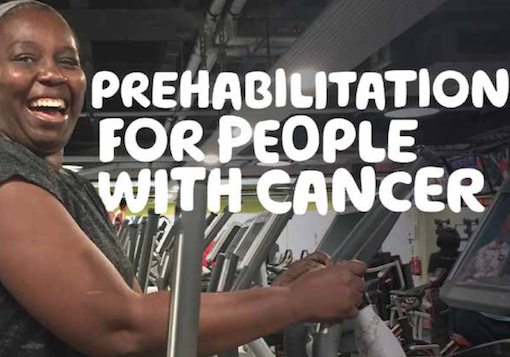
12 July 2019
Earlier this week Macmillan Cancer Support released new guidance on the provision of prehabilitation for cancer patients. This follows up 2017’s review of evidence which concluded that prehabilitation should be integrated into routine cancer care. This new document outlines the principles of prehabilitation and offers advice and support on how this can be achieved in practice. Within the document prehabilitation is defined as ‘preparing people with cancer for treatment through promoting healthy behaviours and through needs-based prescribing of exercise, nutrition and psychological interventions’. Macmillan believe that prehabilitation is part of a continuum to rehabilitation.
In terms of benefits to the patient and those who care for them, prehabilitation offers three main benefits:
• Provides a sense of personal empowerment through fostering a sense of control and purpose
• Improves physical and psychological resilience allowing patients to cope with treatments and maintain this improved resilience into the post-treatment period
• Achieves long term health by fostering behaviour change
In terms of the whole health economy effective prehabilitation can reduce length of hospital stay, enhance recovery after cancer treatment, reduce post-treatment complications and facilitate the opportunities for smoking and alcohol cessation. In addition, it may also improve cardiovascular fitness, improve nutrition, improve neuro-cognitive function and overall enhance quality of life.
The main areas of focus in the document are:
• Physical activity and exercise
• Nutrition
• Psychological support and behaviour change
By utilising the principles and areas of focus Macmillan hope that patients can be prepared for all treatment modalities with improved outcomes and that the lifestyle change will be maintained beyond treatment for the rest of patients’ lives. The guidance is aimed at health and care professionals providing services, policymakers, leaders and commissioners of services. It outlines 20 key characteristics of prehabilitation services.
The document goes into a detailed analysis of these but some of the key characteristics of effective prehabilitation services include:
• Providing access to targeted interventions for all people with cancer.
• Developing, alongside the patient, a personalised prehabilitation care plan (PPCP) as part of their overall care plan
• Members of prehabilitation teams should be represented in MDT discussions
• Identification of people with cancer requiring prehabilitation (prehabilitation screening) should occur as early as possible from diagnosis (and in some cases before a confirmed diagnosis) and in advance of each treatment
• Prehabilitation interventions should link with, and form part of, HNA care plans
This document is an in-depth guide to the main elements of prehabilitation services and how to establish them and has been generally welcomed by the public and health care professionals.
However, the development of these services could well be complex and challenging and there is no clear indication of how these services might be financed.
The document is available here.